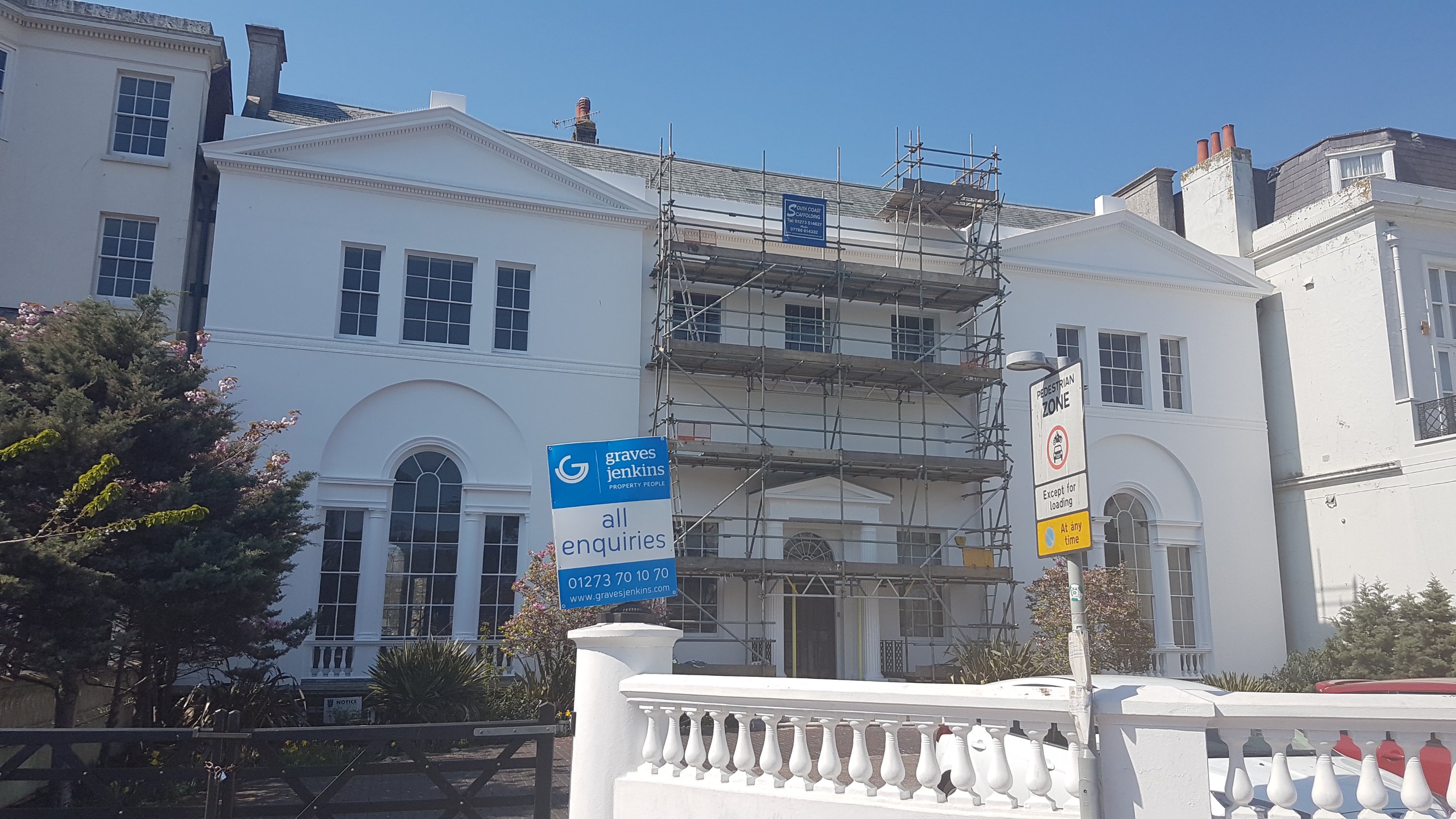The owner of Brighton’s “most important residence” has failed in his bid for costs after the council dropped its prosecution forcing him to strip off modern paintwork.
The owner of Marlborough House, Anthony Antoniades, was taken to court by Brighton and Hove City Council in 2018 over two enforcement notices against him.
The first was for making a series of changes including demolishing a porch and installing Velux rooflights, and the second for repainting the frontage with modern paint.
But both were dropped, the second after a retrospective application was approved on appeal and the first after an application to reverse some of the changes was approved last year.
Paul Ashwell, appearing for Mr Antoniades, said during a costs hearing at Brighton Magistrates’ Court today: “This is the most significant residence in a city not short of architectural buildings of importance.”
He said his client had bought Marlborough House from the council in 1999, the same year English Heritage listing was raised from grade II to grade I, placing more responsibilities on Mr Antoniades.
He said: “It does seem like a remarkable coincidence that the grading took place at a time when the prosecutor ceased to be responsible for the building.”
He added: “It’s fair to say that the council had not made a great job of maintaining the building and there was a great deal to be done.”
Since then, Mr Antoniades has spent half a million pounds on the upkeep and repair of the building, saying: “It’s been a labour of love in which he has launched a large amount of money.
“This is relying on eminent experts to guide him as what should be done to make the building weatherproof and restore it so much as possible so it could be into use in the future.”
He said the council’s “attitude and mindset” was illustrated by a subsequent planning application to place bird spikes on windowsills, to protect the building from the consequences of bird mess.
The council refused it, but it was approved on appeal.
He said: “The prosecution was launched to force Mr Antoniades to the negotiating table, which this did achieve, but we say that’s not a proper motive for launching a prosecution.”
However, Rowan Jenkins said the prosecution had been a last resort after Mr Antoniades had consistently refused to engage with the council’s planning department.
He said: “This argument, interesting though it is, is completely misplaced when it comes to looking at the applicable law.
“The simple fact is that I don’t need to trouble the court with the history of this case.
“When it comes to listed buildings, those buildings have an importance and it’s for the local authority they are tasked by the government with protecting for everybody those buildings.
“The powers which are given to the local authority to do that we would expect the local authority to use.
“If they don’t use those powers and if they allow building to fall to pieces through neglect, to be changed in a way inconsistent with the listing, if they allow that to happen there’s likely to be criticism of the local authority.
“The proceedings were brought because the defendant had been given every chance to comply with notices and did not take them.”
He also said that the case had dragged on not because the council had no case, but because the defence had asked for adjournments.
He said: “The reason for the delays … it’s not the prosecution. It’s the defendant who constantly was asking to delay the hearings in this court.
“Meanwhile, what he did at the same time was either appeal the original notices or essentially finally turn his mind after all this time to actually complying with the original notices.”
Barbara Dart, the presiding magistrate, agreed with Mr Jenkins and dismissed the application. She said: “We do not feel that the local authority had made a clear and stark error in issuing the two summonses.
“We understand this was to encourage Mr Antoniades to engage with the planning department and we believe this is a legitimate prosecution.”
Marlborough House is currently being marketed To Let by Graves Jenkins and has been on the market for some months. Mr Antoniades has said he wants to turn the building into a wine bar, restaurant and hotel.
Originally built in about 1765 as a guest house, it was sold in 1786 to William Hamilton MP, who commissioned Robert Adam to enlarge and model it in the neoclassical style.
Adam extended the house to the south, giving it a fashionable facade featuring a detailed doorway and Tuscan columns.
The Prince of Wales, later the Prince Regent and then George IV, came to stay in 1789 and 1795, while his Pavilion was being converted from a farmhouse into Nash’s masterpiece.
It is often described as the city’s finest Regency building, behind the Pavilion itself.
In the late nineteenth century, it was leased to the Brighton School Board, and served as education offices until 1974.
It then became a tourist information centre, before being closed in the mid-1990s ahead of its sale to Mr Antoniades for around £500,000 in 1999.
Since then it has remained empty, with only occasional squatters moving in.









Tony “Bubbles” took money from company pension fund to buy the building in the first place. Notoriously bloody minded and awkward – very difficult to deal with – does not listen and breaks all laws but sues at the dorp of a hat but never turns up and wastes money and time. He could sell his cars and have the work done properly but he has a chip on his shoulder and thinks he can do what he likes. All the staff at Eurolink will agree.